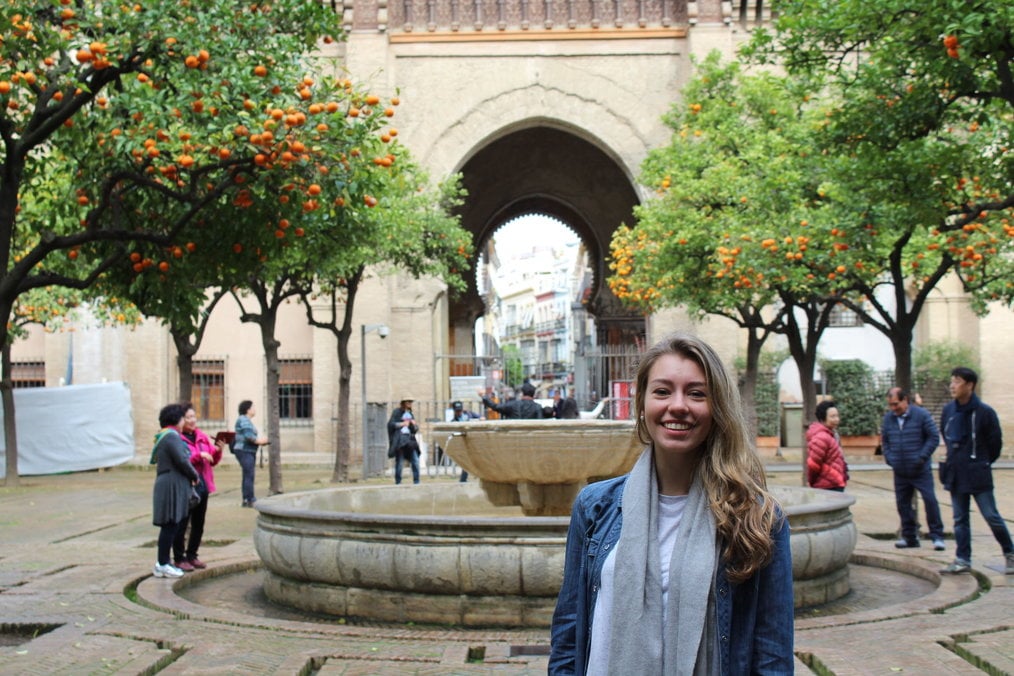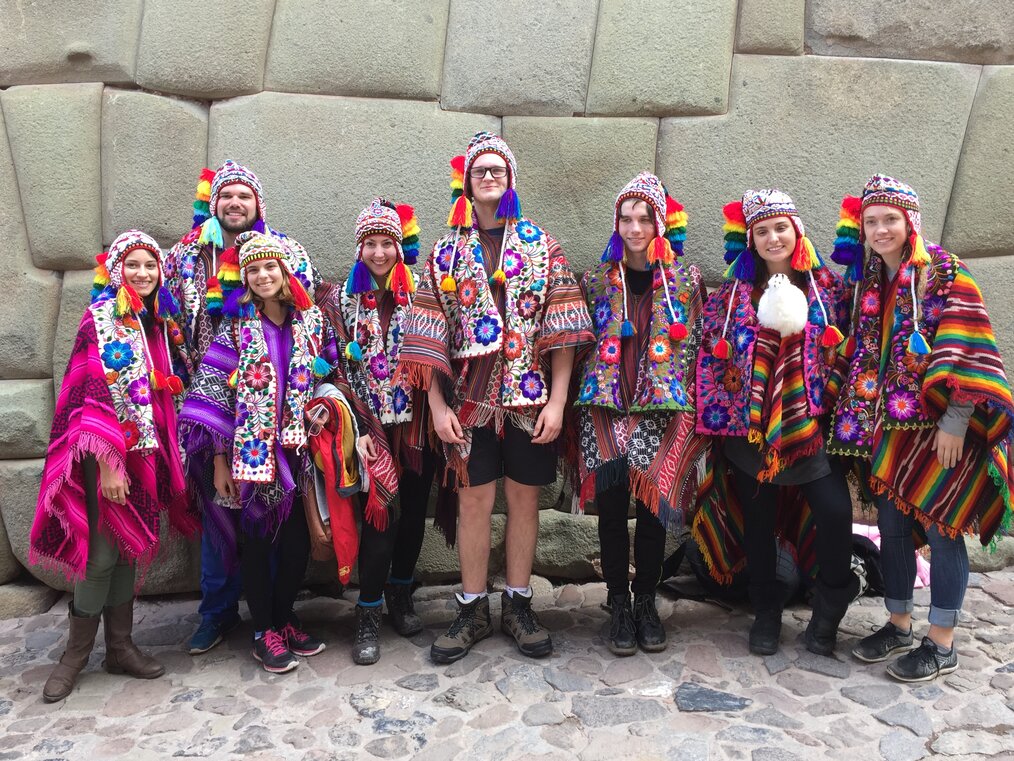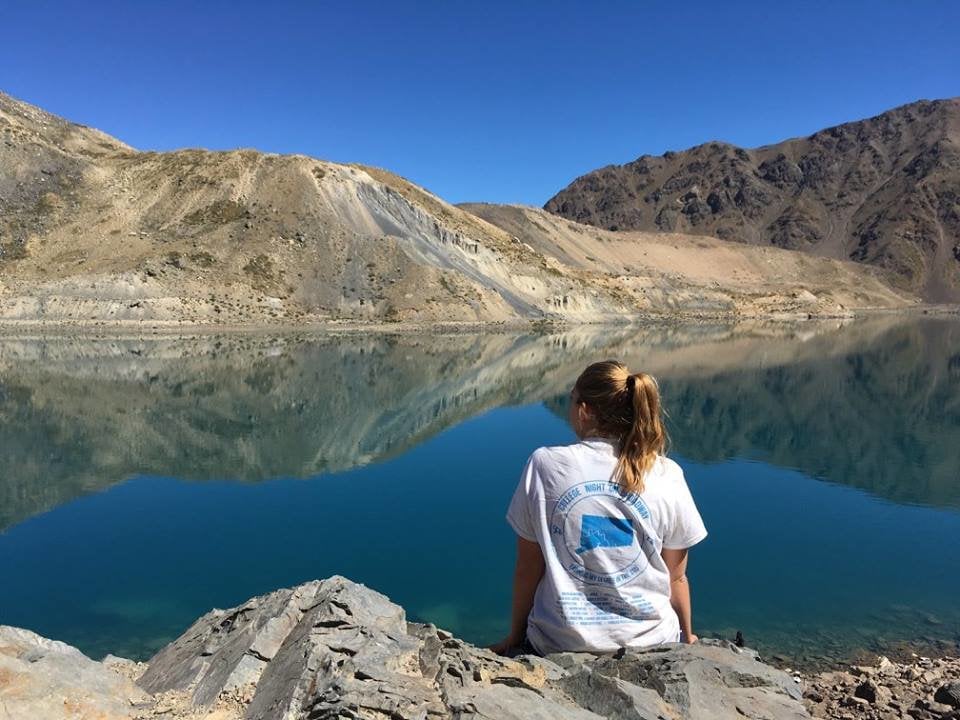How to Pick a Great Spanish Language Course Abroad
With hundreds of programs to choose from when it comes to learning Spanish abroad, it's challenging to know what to pick. We've laid out all the steps you need to take to narrow down your search.

Spanish is popular for language learners and for good reason. Second only to Mandarin Chinese, over 400 million people speak Spanish as their native language worldwide. That’s more than English! Speaking un poco de español (a little Spanish) will get you far as you travel and interact with people across Central and South America, and of course, Spain. Whether your reasons for learning this celebrated language are personal, social, or for career advancement, attending a Spanish language course abroad will significantly improve your opportunities for learning and practicing with native speakers.
With so many great options out there, how do you choose a Spanish course? Turning your search into a step-by-step process might help narrow down the best fit for you.
Venga, empezamos! Come on, let’s get started!
1. Pick a country

First thing’s first: which Spanish-speaking country would you like to go to? You may already have one in mind but if you don’t, you might be overwhelmed to know that 20 countries claim Spanish as their official language. It may be obvious that you can study Spanish in Spain or Mexico but did you know that it’s also spoken in Equatorial Guinea and the Dominican Republic?
So how do you decide? Let’s consider some of the following to help narrow it down.
Consider accents and dialogue
Spanish, like English, has a diverse range of accents and dialects. Even within one country, you find differences in vocabulary. After living in Madrid, I found that using the word doble to order a beer in Alicante, a beach town on the east coast, was met with confused stares from waiters. Imagine the potential differences between countries!
So, let’s consider future use of your Spanish. Will you be working with people from a certain country? Are you planning to move abroad at some point? If either of those are the case, it might be helpful to learn Spanish in your target country for both dialect and cultural understanding. I’ve always found Mexican accents easier to understand but as an American, I have been exposed to more Mexican Spanish over the years than Castellano (main dialect of Spanish in Spain). If you don’t have a specific purpose for your language learning journey, go with what you’re most comfortable listening to. Try browsing through some YouTube videos of speakers from different countries to determine what sits best with your ear.
Some important notes about Spanish by country:
- Argentina and Uruguay: Argentina and Uruguay are notorious in the Spanish-speaking world for their distinctive accents. They actually speak a dialect of Spanish called Rioplatense. Unique to this dialect is the pronunciation of “y” and “ll”. This dialect can sound almost like a mix of Spanish, Portuguese, and Italian. Additionally, Argentines and Uruguyans use “vos” as a replacement for both “tu” (you, informal) and “usted” (you, formal). It resembles the Castellano “vosotros” (you, plural) but it is not to be confused!
- Spain: Spain is divided into 17 autonomous regions, known as comunidades. While each speaks Castellano, there are several regions with co-official languages. Some of the notable ones include Catalan, Basque, Galician, and Valencian. Living in Alicante, I taught children who were learning English, Spanish, and Valencian as school subjects. Although you can learn Castellano anywhere in Spain, in regions with active separtist movements (Pais Vasco and Catalonia) you will be more likely to hear their co-official language spoken in the streets. Certain areas of Spain that have accents that are harder to understand even for other Spaniards are Andalucia and Galicia.
- One word, many meanings: Consider the word “rubber” in English. In the UK, it means an eraser for your pencil. In the US, it’s...something much different. This happens in Spanish, as well (see: coger, paja). While potentially embarrassing, it’s best to treat these language faux pas as part of the learning process and enjoy the inevitable laughs they’ll get you.
Consider geographical location
If accent or dialect alone didn’t nail it down for you, geographical location might be a better place to start. There are several things to consider with location and most depend on preference. Do you want to be someplace tropical? Prefer the beach over the mountains? Think about the following to guide your search:
- Central America and Mexico: If you want to feel like you’re closer to home, a country in Central America might be a more comfortable option than South America or Spain. The U.S. undeniably shares a lot with Mexico; influences from history, culture, food, and music have shaped American culture in important ways. This bond can make studying Spanish here feel a little more familiar. Popular tourist destinations like Belize and Costa Rica also help put this area of the world on Americans’ radar.
- Countries in South America: The majority of South America is in the southern hemisphere which means the seasons are essentially flipped. Northern winter is their summer so plan accordingly if you wish to study abroad during summer vacation. That being said, truly cold temperatures will generally be found in higher elevations. Temperatures near sea level, like in Buenos Aires, average around 50F in July. South America is home to two record holders: the Amazon rainforest, which covers 5.5 million km, and the Andes Mountains, the longest mountain range in the world. Here, there is no lack of biodiversity to explore for those seeking opportunities for ecotourism.
- Europe: If you want to check out other parts of Europe on the cheap during your time abroad, Spain will be a great jumping off point. Budget airlines link major cities to hubs in western Europe and the compactness of the continent means a two hour flight can get you far. Spain’s geographical diversity also means you can simultaneously have consistently warm, sunny weather in the south and east coast, more temperate climates in the areas around Madrid, and rainy, cooler environs up north. If planning to study during the summer, be wary of the fact that the southern part of the country (think cities like Granada, Sevilla, and Malaga) gets very hot and air conditioning is not always widespread. You’ll come to understand the true function of the siesta!
2. Choose the type of program that fits your goals

Now that you’ve hopefully decided on your destination, you’ll need to find your program. Language courses come in different shapes and sizes and vary in price, length, and delivery. Let’s break down the specifics:
Online vs. in-person
In the wake of Covid, more and more opportunities for language study online are appearing. While studying a foreign language from your computer isn’t a new concept, the way they operate has become more interactive and immersive.
Long-term vs. short-term
Although attending a course long-term or short-term is a lot about your individual goals, what it comes down to realistically for a lot of people is cost and time commitment. Courses lasting days or weeks will be cheaper than those lasting months. While most offer built-in discounts for added weeks, you still have to pay the program fee up front. For people with work, school, or family commitments, staying abroad for an extended period of time may not be a viable option. Lastly, it seems like an obvious correlation between length of time studying and rate of improvement but students attending a short-term program may end up being more focused knowing they have limited time. The experience is 100% the effort you put in and what you make of it.
Cultural immersion vs. classroom-only
Many programs build opportunities for cultural immersion into their programs. While learning the language is the goal, building cross-cultural ties and communication, as well as awareness of customs and norms are just as important. Cooking, art, and dance classes, sightseeing, and visits to museums and other heritage sites are some of the common activities included or offered for an additional fee. However, for programs that only include a classroom component, students are encouraged to explore their town or city after classes end for the day. For travelers who wish to structure their own itinerary, this option may be preferable.
Read more: Should You Learn a Language in the Classroom or Through Immersion?
3. Take a look at these recommended programs

With over 600 Spanish language courses abroad available on Go Overseas, there is bound to be something for every budget and lifestyle. Explore a few of our highly rated picks for both online and in-person Spanish language courses.
Online:
- Online Spanish Classes with Tico Lingo: Native Costa Ricans give 1-on-1 lessons in 5- or 10-hour packages delivered over Zoom with all materials included. Students can focus on specialized topics like healthcare, law, or business.
- Online Spanish Classes Blended with Mexican Culture with Na'atik Language and Culture Institute: Sign up for 5-, 10-, or 20-hour packages with a native teacher who tailors lessons to a student’s individual goals while also combining Mexican and Maya cultural points into every session.
In-person:
- LITA: A Unique Approach to Language Immersion in Spain: With LITA, high school students can have an authentic, immersive experience learning Spanish in Spain through personalized programs, research projects and internship opportunities, and small group learning. Participants will also live with a host family, allowing them to learn more about Spanish culture, while improving their Spanish skills.
- Spanish Immersion in La Antigua, Guatemala with Maximo Nivel: Short-term stays average between 1-5 weeks, with each additional week offered for an extra fee. Ideal for group or private lessons or those seeking classes in business or medical Spanish. Maximo Nivel’s Tandem Conversation Program pairs students with local English language students for an intercambio de idiomas (language exchange).
- Spanish Immersion Program for Adults and Families with Agualivar Spanish School: Located in a village outside of Malaga, Spain, Agualivar is an immersive homestay where students can practice their Spanish 24 hours a day. Program fee includes 15 hours of lessons a week, full room and board, and opportunities to speak Spanish daily (no English allowed in the house!).
Speaking Spanish will open doors across the world. Whether doing language study online or in-person, you’ll be faced with countless opportunities to put your new language into practice -- you just have to seize them!
